Save Your Back in Winchester: Summer Ergonomic Garden Tips
Quick Ergonomic Tips for Pain-Free Summer Gardening:
- Use long-handled tools to reduce bending.
- Lift heavy items correctly using your legs, not your back.
- Take frequent breaks and vary your tasks.
- Use kneeling pads or garden seats for comfort.
- Consider raised beds or containers to minimize stooping.
- Design your garden for easy access and maintenance.
Planning your summer garden projects? Don’t let back pain get in the way! If you need help with demanding tasks, request a free quote today.
Introduction: Gardening Shouldn’t Be a Pain in the Back (Especially in Winchester!)
Ah, summer in the Ottawa area, especially around Winchester! The sun is shining, the birds are singing, and your garden is calling your name. There’s truly nothing quite like the satisfaction of digging in the earth, planting vibrant flowers, nurturing your vegetable patch, or watching your landscaping efforts bloom right here in our community. It’s pure bliss… until Monday morning rolls around, and suddenly, bending over feels like preparing for a gold medal lift.
We’ve all been there – that twinge in the lower back, those sore knees, or the aching shoulders after a weekend of *enthusiastic* gardening. Let’s be honest, while we love the results, the physical toll can sometimes make us question our passion. Gardening is supposed to be a relaxing escape, a source of joy, not a literal pain in the back! Whether you’re tending a charming flower bed in Winchester, managing a larger property near Greely, or perfecting your lawn care edging in Metcalfe, those post-gardening aches can really dampen the spirit.
But what if you could enjoy the fruits (and flowers!) of your labour without feeling like you wrestled a particularly stubborn patch of crabgrass? Good news – you absolutely can! This article is your friendly guide to smarter, more comfortable gardening. We’ll explore simple, practical ergonomic tips and tricks, covering everything from choosing the right gardening tools to adopting better body mechanics and pacing yourself. Our goal? To help you keep your beautiful Winchester garden thriving *and* your body feeling great all season long. Let’s dig in (comfortably)!
Why Your Spine Sends SOS Signals After a Day in the Dirt
Okay, let’s chat about *why* our backs sometimes feel like they’ve gone ten rounds with a stubborn tree root after a glorious day spent landscaping or tending the garden beds. It’s not just you whispering “ouch” when you stand up! Think about the typical moves we make out there:
- The Constant Bend: Weeding, planting those lovely petunias, harvesting low-growing veggies – it often involves bending at the waist for long stretches.
- The Heavy Lift: Hoisting bags of soil, lugging pots, maneuvering wheelbarrows full of compost or rocks. That nutrient-rich soil or decorative stone adds up!
- The Awkward Twist: Shoveling soil, reaching across a wide bed to prune something, spreading mulch – we twist and turn in ways our bodies might not appreciate long-term.
- The Repetitive Strain: Raking leaves across the lawn, hoeing between vegetable rows, trimming hedges… doing the same motion over and over (and over) can fatigue specific muscle groups.
Each of these actions, especially when done for hours under the sometimes humid Ottawa summer sun, puts unique stress on your spine and the muscles that work hard to support it. Bending forward repeatedly or for long periods stretches back muscles awkwardly while compressing the front parts of your spinal discs. Lifting improperly – using your back like a crane instead of engaging your strong leg muscles – can multiply the force on your lower spine dramatically. Imagine hoisting a 20lb bag of premium garden soil; bad form can make that feel like 100lbs to your vulnerable lower back! This is especially true when dealing with the heavy clay soil common in areas like Greely and Metcalfe, which requires more effort to dig and move than sandier soils you might find closer to the Rideau in Kars or Richmond. Explore local gardening groups like the Master Gardeners of Ottawa-Carleton for soil advice.
It’s almost like your back is politely (or maybe not-so-politely by Monday morning) tapping you on the shoulder and saying, “Hey! This isn’t quite how I’m designed to work for hours on end!”
This is precisely where the concept of *ergonomics* becomes your gardening best friend. Don’t let the fancy word scare you! Simply put, ergonomics is about setting up your tools, tasks, and movements to fit *you* better, reducing strain and making things more comfortable and efficient. It’s about working smarter, not just harder, to prevent those aches and pains.
Thinking ahead can make a huge difference. For instance, smart isn’t just about aesthetics; arranging beds for easier access can genuinely reduce awkward reaching and bending later on. And keeping good can be a great way to note which tasks felt particularly strenuous last season, reminding you to approach them with better technique or tools next time.
Getting your garden into shape often starts well before the peak season; kicking things off right involves more than just a solid – it includes prepping your body, too. Similarly, as the growing season winds down, you’ll want to ensure your beloved plants make it through the winter with a thorough , another activity requiring physical work. If you find certain demanding jobs consistently leave you feeling sore, remember that calling for backup is a smart move. Sometimes, investing in professional Landscaping and Yard Care Services for the heaviest lifting or most repetitive tasks is the best ergonomic decision for your long-term well-being. You can even check our Google Business Profile for reviews.
Gear Up! Your Back-Saving Toolkit
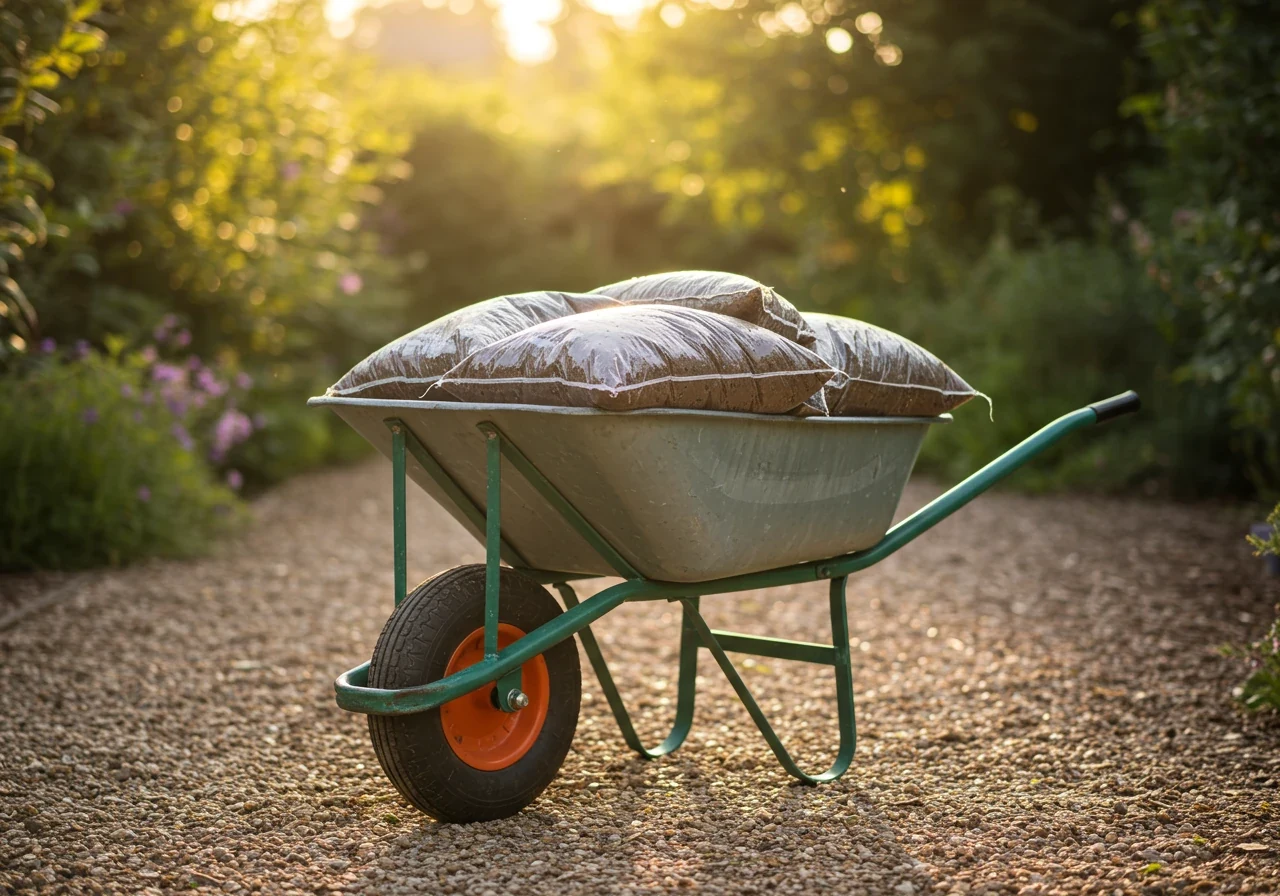
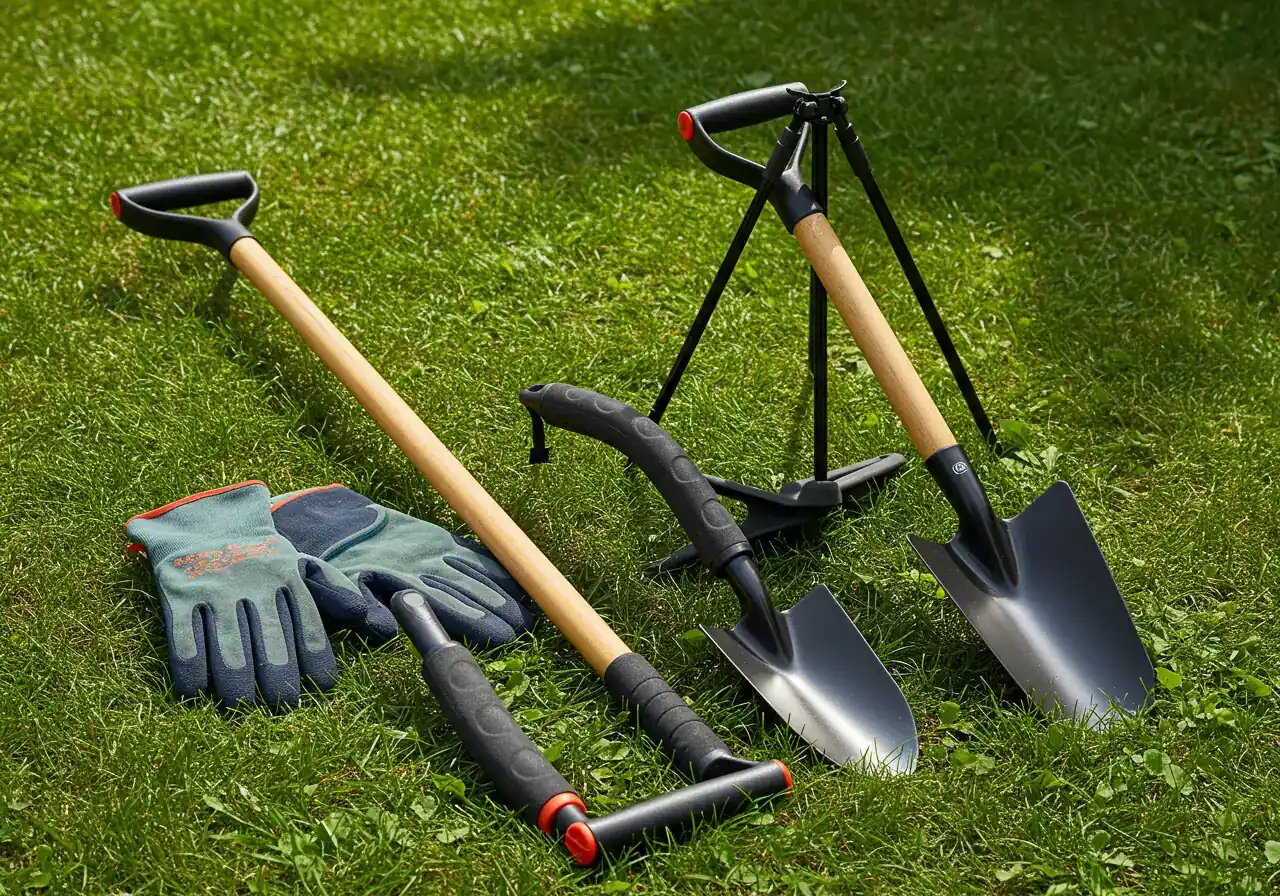
Alright, let’s talk tools! Trying to tackle your garden with flimsy or poorly designed gear is like trying to eat soup with a fork – frustrating and pretty inefficient. The right tools, especially *ergonomic* ones, are your best buddies when it comes to preventing those post-gardening groans. Think of them as an investment in enjoyable, pain-free landscaping!
So, what makes a tool “back-saving”? It usually boils down to a few key features:
- Longer Handles: This is a big one! Tools like shovels, rakes, hoes, and cultivators with longer handles mean you can stand up straighter. Less bending equals less strain on your lower back. It’s all about leverage, letting the tool do more of the work.
- Smart Grips: Look for padded, non-slip, or specially shaped handles. These reduce the force needed to grip, easing strain on your hands, wrists, and forearms. Less tension there often translates to less tension overall. Some even have rotating handles or T-grips for extra comfort.
- Wheels: Bless the inventor of the wheel! Wheelbarrows, garden carts, and even some rolling tool caddies drastically reduce the amount of lifting and carrying you need to do. Moving heavy bags of soil or mulch becomes a breeze instead of a back-breaker. Using a long-handled shovel makes spreading that mulch easier too, but achieving that perfect crisp edge might still be tricky. For that pro finish, explore options like professional Mulching and Edging Services.
Stand-Up Weed Puller (e.g., Dandelion Puller)
Pros: No bending required! Great for single, deep-taprooted weeds.
Cons: Slower for large areas, might leave small fragments behind.
Best For: Scattered dandelions or thistles across the lawn. Fighting persistent weeds in Marionville? A good stand-up weeder is great, but for a widespread issue, the efficient solution might be our Marionville Garden Clean Up Service.
Long-Handled Hoe (Scuffle or Dutch Hoe)
Pros: Covers ground quickly, minimal bending, good for surface weeds.
Cons: Needs sharpening, can disturb soil/mulch surface more.
Best For: Weeding between vegetable rows or open garden areas. If your Winchester garden feels more like a jungle gym for weeds than a peaceful retreat, even the best weeder might need backup. Consider professional help like our dedicated Winchester Garden Clean Up Service to get things back under control.
Ergonomic Hand Weeder
Pros: Precise control for tight spots around plants.
Cons: Requires kneeling or sitting (use a pad or rolling seat!), ensure grip is truly ergonomic to avoid wrist strain.
Best For: Detailed weeding within flower beds or containers.
Before you buy, try! Head to a local garden centre or hardware store – maybe in Barrhaven or Nepean – and actually *hold* the tools. Feel the weight, the grip, the balance. What feels right for someone else might not be perfect for you. Check out resources like the Ottawa Horticultural Society for local gardening advice.
Quick Eco-Tip: Keep your tools happy and they’ll last longer (saving money and reducing waste!). Clean off dirt after each use, keep blades sharp (a sharp tool requires less force!), and lightly oil metal parts to prevent rust. Sometimes, even with the best tools, big jobs like clearing overgrown areas need professional help. Check out our range of Landscaping and Yard Care Services if you need a hand. Dealing with heavy debris or a massive leaf pile in Metcalfe? An ergonomic rake helps, but sometimes a full Metcalf Yard Cleanup Service is the real back-saver. Choose wisely, and your back will thank you!
Move Like a Pro: Pain-Free Gardening Techniques
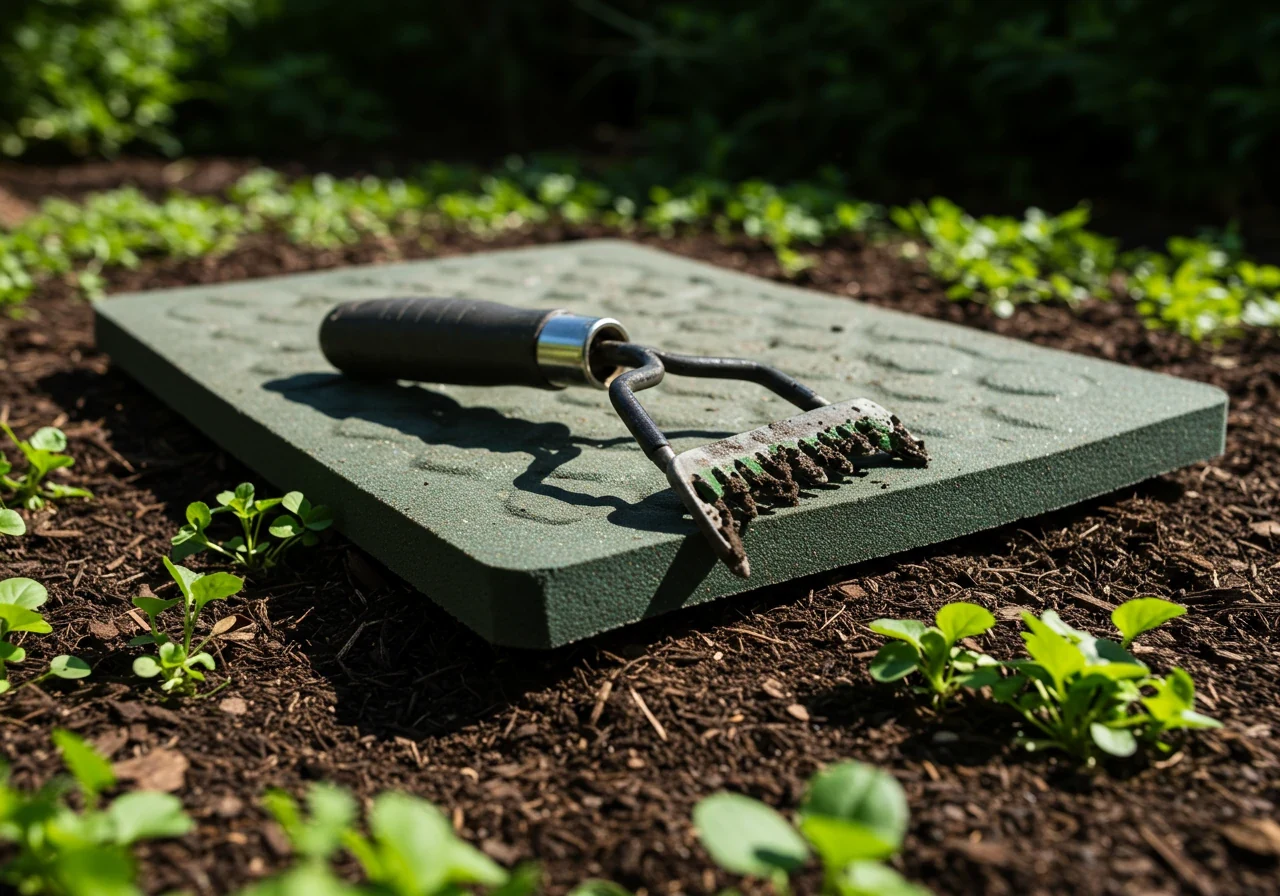
Okay, you’ve got the right gear, now let’s talk about the most important tool in your landscaping arsenal: *you*! Using your body correctly is the secret sauce to comfortable, pain-free gardening. It’s less about brute strength and more about smart, efficient moves. Think graceful gardening ninja, not backyard bulldozer trying to wrestle a stubborn root.
Lifting Like a Champ (Not a Chump):
This is a big one! Hauling bags of soil, hefty planters, or decorative rocks is often where backs go “uh-oh.” Remember the golden rule: Lift with your powerful legs, *not* your vulnerable back! Here’s how:
- Step 1: Size Up the Load. Before you even bend down, ask yourself: “Can I *really* lift this comfortably?” If it feels too heavy, get help from a friend or break the load into smaller parts. Seriously, playing the hero isn’t worth weeks of back pain. (Sometimes the smartest move is calling for professional backup – you can see the kinds of landscaping results we achieve, including managing heavy materials, in our project Gallery).
- Step 2: Get Close. Stand right next to the object you need to lift. Place your feet shoulder-width apart, maybe one foot slightly ahead of the other for better balance.
- Step 3: Bend Your Knees and Hips. Think *squat*, not fold. Keep your back straight – imagine keeping your chest proud and shoulders back. Do *not* just hinge forward at your waist!
- Step 4: Get a Firm Grip. Make sure you have a secure hold on the object.
- Step 5: Lift Smoothly. Tighten your core muscles (like you’re bracing for a tickle fight) and push up using your strong leg muscles. Keep the load close to your body as you straighten up. Your back should remain straight throughout the lift.
- Step 6: Turn, Don’t Twist. If you need to move the object sideways, move your feet to turn your whole body. *Avoid* twisting your torso while holding a heavy load – that’s asking for trouble!
Digging Without the Drama:
Turning over soil or digging planting holes, especially in the heavier clay soils sometimes found around Ottawa neighbourhoods like Vernon or Kenmore, requires good technique to avoid strain.
- Keep your shovel blade sharp; a sharp tool needs less force.
- Place your foot firmly on the shovel step and use your body weight to push it into the ground.
- Bend your knees slightly when lifting the scoop of soil.
- Don’t try to lift a mountain on your shovel! Smaller, manageable scoops are much easier on your back. This mindful approach is key during intensive tasks like thorough Soil Preparation.
Weeding Wisely:
Spending hours bent over pulling weeds is a classic recipe for backache. Mix it up!
- Invest in a thick foam kneeling pad or a dedicated kneeler seat with handles to help you get up and down.
- Alternate between kneeling, sitting on a low garden stool, and using those long-handled weeding tools we talked about earlier.
- Always get close to the weeds you’re pulling to avoid excessive reaching and straining. If the weeds seem to be staging a full-scale invasion, remember professional help is an option. Our teams, like the dedicated Marionville Garden Clean Up Service, are equipped to handle overwhelming weeding challenges efficiently. Or perhaps the Metcalf Garden Clean Up Service is closer to you.
Raking Rhythm:
Raking leaves or smoothing soil doesn’t have to be a back-breaker.
- Use a “scissors” stance: stand with one foot forward and one back.
- Pull the rake towards you using your arms and legs, shifting your weight smoothly between your feet. Avoid just bending at the waist and pulling with your back.
- Keep your back relatively straight throughout the motion. Consistent, proper raking is a core part of effective Lawn Care.
Watering Wonders:
Even watering can cause strain if done improperly.
- Use a hose with a long wand attachment. This lets you reach plants without constantly bending over.
- If you prefer watering cans, use two smaller ones instead of one large, heavy one. Fill them equally and carry one in each hand to balance the load close to your body. Learn water-saving tips from the City of Ottawa Water Wise Gardening guide.
Most Importantly: Pace Yourself, Partner!
Your garden project isn’t a race. Enjoy the process!
- Break it Up: Work in focused bursts of 30-45 minutes, then take a 5-10 minute break. Stand up, stretch gently, walk around, grab some water.
- Mix it Up: Switch between different tasks. Do some digging, then maybe some lighter pruning, followed by watering. This prevents repetitive strain on any single muscle group. Check out our About Us page to learn more about our approach to efficient work.
- Listen to Your Body: This is crucial. If something starts to feel sore or painful, *stop doing it*. Pushing through pain is often how minor aches turn into major injuries. Understanding your physical limits and respecting them is vital for safe gardening; attempting tasks beyond your capacity can lead to issues, a principle reflected in how responsible service providers operate (you can review general service guidelines in our Terms and Conditions). Accessing your account details is easy via the Customer Portal.
By putting these simple techniques into practice and remembering to take it easy, you can focus on the sheer joy of creating your beautiful Ottawa garden oasis, rather than nursing aches and pains the next day. Happy, healthy gardening!
Ergonomic Gardening Timeline: From Warm-up to Cool-down
Prepare your muscles with gentle dynamic movements like arm circles and leg swings. Think light stretching to get blood flowing before you start digging or lifting.
Select ergonomic tools: long handles for standing tall, comfortable grips to reduce hand strain, and wheels (wheelbarrow/cart) for heavy loads. Proper Material Selection applies to tools too!
Use proper lifting techniques (legs, not back!). Alternate tasks (digging, weeding, planting). Use kneeling pads or stools. Maintain good posture. Consider options like Sod Installation for large lawn areas to minimize seeding strain.
Stand up, stretch gently, walk around, and hydrate. Listen to your body and stop if you feel pain. This is crucial for preventing overuse injuries.
Perform static stretches (hold for 15-30 seconds) for hamstrings, quads, shoulders, and back to help muscles relax and reduce stiffness. Your body will send you a mental Thank You note!
Review what felt strenuous. Could a different tool, technique, or garden layout help? Maybe raised beds or professional help for big tasks like a Ottawa Garden Clean Up Service? Planning makes future gardening easier.
Stretch It Out: Pre-Gardening Warm-ups & Post-Gardening Cool-downs
Think of your gardening sessions like a mini workout – because, let’s face it, hauling soil, digging, and weeding *is* physical work! Just like you wouldn’t sprint without warming up, diving straight into heavy landscaping can leave your muscles feeling surprised and sore. Taking just 5-10 minutes before and after your garden time, whether you’re in bustling Barrhaven or the active communities around Russell and Embrun, can make a world of difference. Your back, shoulders, and knees will thank you!
Pre-Gardening Warm-up: Getting Ready to Rumble (Gently!)
The goal here is to wake up your muscles and get the blood flowing. Think gentle, dynamic movements – not long, held stretches yet. This helps prepare your body for the bending, lifting, and reaching ahead. Just like good Soil Preparation readies your garden beds, a good warm-up readies your body for planting and tending.
Try these easy moves:
- Arm Circles: Stand tall and make big, slow circles forward with your arms for 10-15 repetitions, then backward. Imagine you’re drawing giant sunflowers in the air.
- Leg Swings: Hold onto a fence or sturdy chair for balance. Gently swing one leg forward and backward like a pendulum, 10 times. Repeat with the other leg. Keep the movement controlled, not wild.
- Torso Twists: Stand with feet shoulder-width apart, knees slightly bent. Gently twist your upper body side to side, letting your arms swing loosely. Do this for about 30 seconds. Think gentle wringing-out, not pretzel-making.
Post-Gardening Cool-down: Ahh, Sweet Relief!
Okay, garden warrior, you did it! Now’s the time for static stretches – holding a gentle stretch for 15-30 seconds. This helps your muscles relax, improves flexibility over time, and can reduce that “day-after” stiffness, especially after tougher jobs like a major clean-up similar to what our Metcalf Garden Clean Up Service handles. Remember to breathe deeply during your cool-down.
Give these stretches a go:
- Hamstring Stretch: Sit on the ground with one leg straight, the other bent with the sole of your foot near your inner thigh. Gently lean forward from your hips towards your straight foot until you feel a mild stretch in the back of your thigh. Hold, then switch legs. No bouncing!
- Quad Stretch: Stand near a wall or chair for support. Bend one knee, grab your ankle, and gently pull your heel towards your backside. Keep your knees close together. You should feel a stretch in the front of your thigh. Hold, then switch legs.
- Shoulder Stretch: Gently bring one arm across your chest and use your other hand to press it slightly closer to your body. Feel the stretch in your shoulder. Hold, then switch arms.
Taking these few minutes is a simple investment in your gardening comfort. Your body will definitely send you a mental Thank You note! Remember, these are general suggestions; if you have specific health concerns, consult a healthcare professional. We value your well-being just like we value your information, as detailed in our Privacy Policy. And hey, if certain big garden jobs consistently leave you feeling overwhelmed despite your best efforts, getting professional help is always a smart ergonomic choice – you can easily Book Estimate with us online.
Smarter Garden Design for a Happier Back
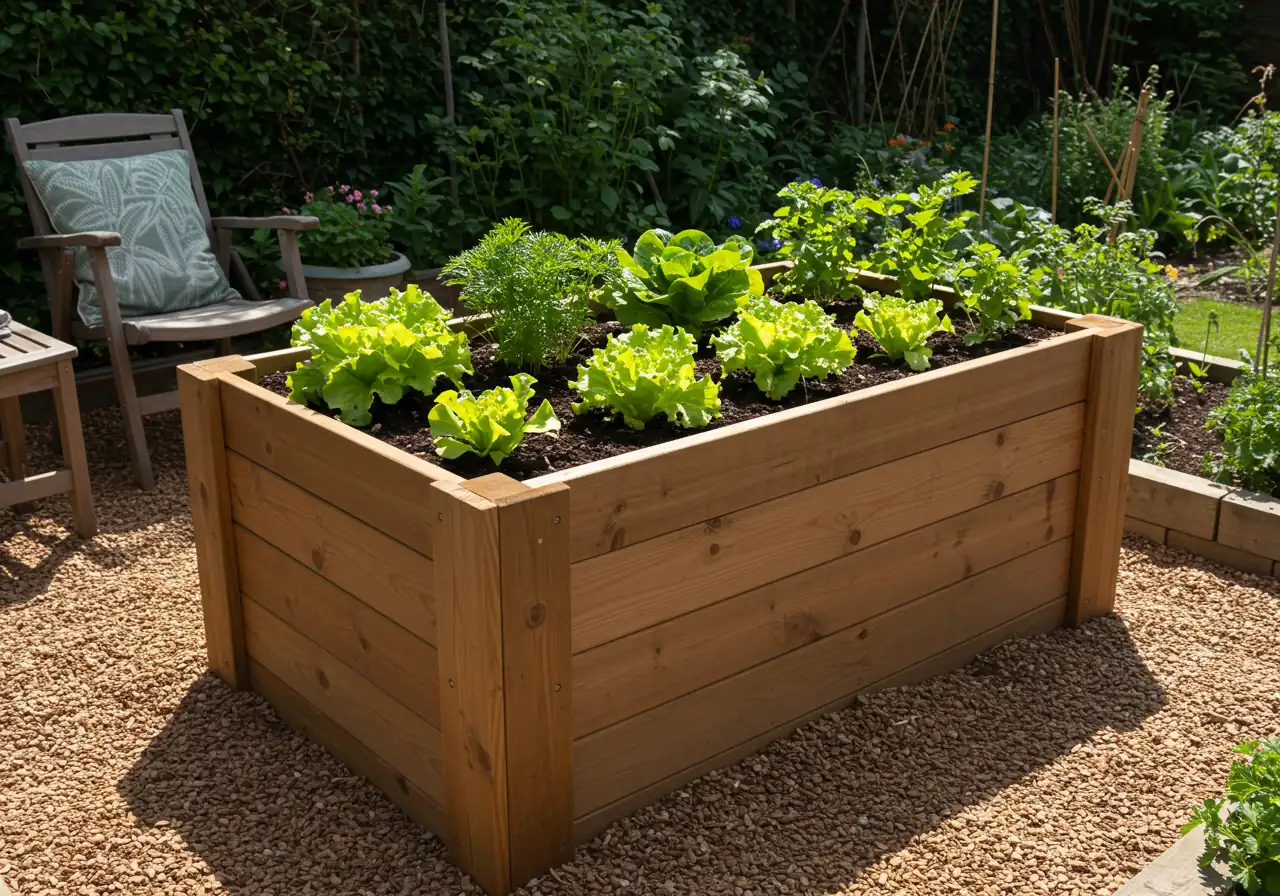
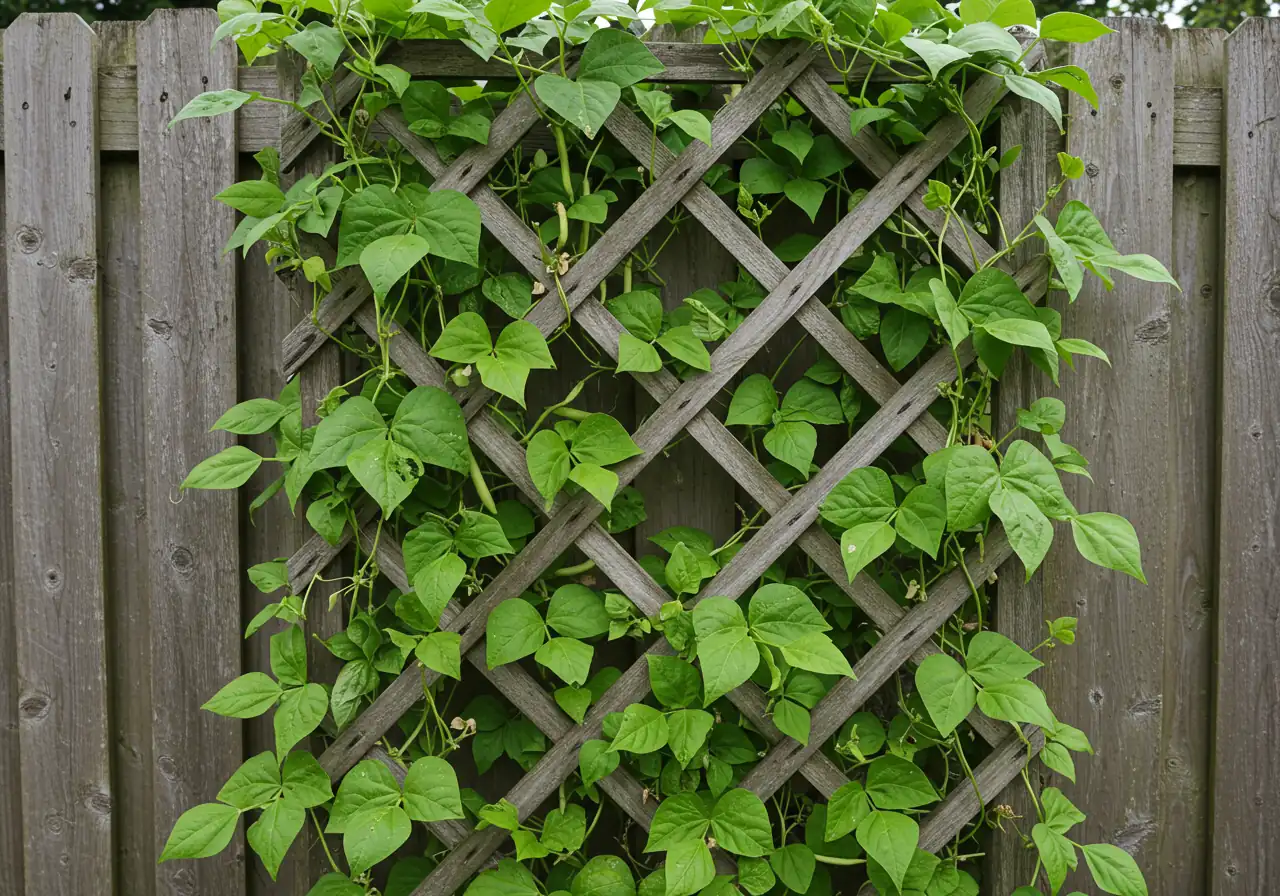
Okay, we’ve talked about having the right tools and moving like a gardening guru, but what if your garden’s *layout* itself is setting you up for strain? Designing your garden thoughtfully from the get-go, or even tweaking your existing space, can be a game-changer for your back. Let’s turn your landscaping into a haven of comfort, not a chiropractic challenge! We all admire those effortlessly beautiful gardens you see around Ottawa, perhaps strolling through lovely Manotick, and wonder how they do it. Part of the secret is often smart design that makes maintenance *easier*. Consider checking community resources like Just Food Ottawa for garden design inspiration.
Elevate Your Efforts: Raised Beds & Containers
These are the rock stars of back-friendly gardening!
- Raised Beds: Bringing the garden up to *you* drastically reduces bending and kneeling. You can build them to a comfortable height – waist-high beds mean minimal bending for planting and weeding. Plus, you control the soil mix perfectly, which is great for areas with tricky clay or sandy soil. Thoughtful Material Selection for your beds can also add to the garden’s beauty and longevity. *Eco-tip:* Consider using reclaimed wood (untreated, of course!) or durable, long-lasting materials. Professional Garden Install services can help build these features.
- Container Gardening: Perfect for patios, balconies, or adding pops of colour anywhere. Pots and containers mean no digging into tough ground, and you can place them at convenient heights on benches or stands. Just ensure they have good drainage! *Eco-tip:* Group pots to create microclimates and make watering more efficient.
Go Vertical: Reach for the Sky!
Why bend down when you can reach up? Vertical gardening uses trellises, wall pockets, or stacked planters to grow flowers, herbs, and even some veggies upwards. It saves ground space (ideal for smaller Ottawa yards!) and minimizes stooping. Imagine harvesting beans or cherry tomatoes while standing comfortably!
Clear the Way: Pathways & Access
Ever stumble over a hidden hose or awkwardly stretch across a wide flower bed? Smart pathways are key!
- Width Matters: Make paths wide enough for easy walking, kneeling beside, and maneuvering a wheelbarrow or garden cart. Aim for at least 2-3 feet.
- Smooth Sailing: Choose path materials that are stable and relatively smooth for easier rolling of carts and less tripping hazard.
- Strategic Placement: Design paths to give you easy access to *all* parts of your garden beds for maintenance without excessive reaching.
- Summer Planning Tip: Think ahead to mid-season tasks. Ensure your design allows easy access for summer jobs like deadheading spent blooms or harvesting vegetables without trampling neighbouring plants.
Work Smarter, Not Harder: Plant Selection & Grouping
The plants you choose and where you put them significantly impact your workload.
- Right Plant, Right Place: Select plants suited to Ottawa’s climate (Zone 5a typically) and your specific garden conditions (sun, shade, soil type). Happy plants are healthier and require less fussing! Native plants are often wonderfully low-maintenance choices.
- Low-Maintenance Heroes: Opt for perennials that don’t need constant dividing, shrubs that maintain a nice shape without endless pruning, and groundcovers that suppress weeds naturally.
- Group Therapy: Place plants with similar watering and sunlight needs together. This streamlines watering and feeding routines – no more dragging the hose back and forth unnecessarily.
Sometimes, implementing these back-saving designs, especially building raised beds or clearing overgrown areas, requires significant initial effort. If you’re starting fresh or revamping a challenging spot, a thorough Property Clean Up might be the first step. Tackling neglected corners, like the intensive work handled by our Metcalf Property Cleanup Service, can clear the way for your new, comfortable layout. Planning these kinds of projects can feel overwhelming, but you can always reach out to professionals and get valuable Estimate Feedback on your ideas before committing. Ultimately, smart design choices lead to less strain and more enjoyment, resulting in truly beautiful Garden Transformations you can maintain comfortably for years to come. Happy designing!
Common Gardening Strain Areas (Reported)
*Illustrative data based on common gardening complaints.
Highlight Box: Quick Ergonomic Wins!
Feeling the garden groove but not the garden groan? Whether you’re digging in Nepean or tidying up near Osgoode, keeping your body happy while creating your beautiful Ottawa landscape doesn’t have to be complicated. Here are a few super simple tricks – your quick ergonomic wins – to make gardening feel less like a chore and more like the joy it should be:
- Go Long (With Your Tools!): Choose shovels, rakes, and hoes with longer handles whenever possible. This simple switch lets you stand up straighter, reducing that “ouch-my-back” bend. Less stooping = happy spine!
- Lift Like a Squat Pro: Remember the golden rule for heavy bags of soil or pots: Bend your knees and hips, keep your back straight, and lift with your powerful leg muscles. Your back isn’t a crane, folks!
- Take Five (or Ten!): Don’t try to conquer the entire garden in one go. Work in shorter bursts (30-45 minutes) and take regular breaks to stand, stretch gently, and hydrate. Pace yourself!
- Be Kind to Your Knees: Invest in a comfy kneeling pad or a little garden stool/seat. Getting down for detailed weeding or planting is often necessary, but cushion those joints! It makes tackling those stubborn spots much easier, though for widespread weed jungles, sometimes a dedicated service like the Marionville Property Cleanup Service is the ultimate back-saver.
- Elevate Your Game: Consider using raised garden beds or containers. Bringing the planting level up closer to you drastically cuts down on bending and straining. It’s a fantastic long-term investment in comfortable gardening.
- Know When to Call for Backup: Seriously, some jobs are just *big*. If you’re looking at a major overhaul, hauling away lots of debris, or wrestling an overgrown jungle that feels overwhelming, calling in professionals for a Property Clean Up is often the smartest ergonomic choice. For larger tasks across the region, the comprehensive Ottawa Property Cleanup Service is ready to help, and for focused efforts in specific areas like Metcalfe, there’s the dedicated Metcalf Property Cleanup Service to tackle those really tough jobs, saving you strain and pain.
Implement even one or two of these tips, and you’ll likely notice a difference. Happy (and comfortable) gardening!
FAQs: Your Ottawa Ergonomic Gardening Questions Answered
Oh, that infamous Ottawa clay! Use a sharp, sturdy spade or digging fork, and take smaller scoops – don’t try to lift too much at once. Work *when the soil isn’t too wet or bone dry*. Gradually improving your soil structure with compost also makes it easier to work over time. For big initial soil turning or bed prep, sometimes professional help, like assistance you might find with a Marionville Yard Cleanup Service, can save you significant strain.
Absolutely! Small spaces often mean more bending in confined areas. Embrace vertical gardening with trellises or wall planters to bring plants up to you. Use containers placed at comfortable heights. Choose multi-functional, lightweight tools with good grips. Keep pathways clear, even narrow ones, to avoid awkward twisting and reaching around obstacles. Good planning maximizes space *and* comfort!
Raised garden beds are fantastic for reducing bending! Lightweight, long-handled tools are your friends, as are kneeler seats with handles to help you get up and down. Pace yourself – short gardening sessions are key. Don’t hesitate to ask family for help with heavier tasks or consider regular assistance like professional Garden Maintenance to keep your beloved garden manageable and enjoyable.
Big yards need smart strategies! Break tasks into smaller, manageable zones or time blocks. Use wheeled garden carts or wheelbarrows for hauling materials – save your back! Invest in long-handled tools and consider low-maintenance landscaping choices like native plants or mulched areas to reduce workload. For seasonal heavy lifting like leaf removal, professional help like our Ottawa Yard Cleanup Service can be a huge ergonomic win.
Generally, yes! Think of them as an investment in your *comfort* and long-term gardening enjoyment. They’re designed to reduce strain on your joints and muscles, potentially preventing injuries and allowing you to garden for longer periods without pain. Quality ergonomic tools often last longer too. If you’re unsure which tools offer the best value for your specific needs, feel free to Contact Us for friendly advice.
Conclusion: Enjoy Your Winchester Garden, Pain-Free!
So there you have it! Your beautiful Winchester garden, whether it’s a sprawling space out near Greely or a charming backyard plot, should be a source of joy, not joint pain. We’ve dug into why gardening can sometimes leave you aching and, more importantly, *how* to prevent it. By choosing smarter gardening tools, moving your body wisely (remember lift with your legs!), warming up, cooling down, and maybe even rethinking your garden design with things like raised beds, you truly can make landscaping a comfortable and rewarding hobby.
The goal isn’t to turn gardening into a complicated science project, but simply to work smarter, not harder. Being mindful of how you move and the gear you use means less strain, more stamina, and ultimately, more time spent admiring those lovely blooms or harvesting your tasty veggies without groaning when you stand up. It’s about enjoying the process *and* the results!
Ready to give your back a break?
- Start Small: Pick just *one* tip from this guide – maybe focus on better lifting technique or invest in a kneeling pad – and try it next time you’re out in the yard.
- Know Your Limits: For those bigger landscaping projects, like a major property clean up, heavy mulching, or installing new garden beds, remember that calling for backup is a perfectly sensible (and back-saving!) option.
- Reach Out: If you’re facing a task that feels overwhelming or you’d like professional help to make your Ottawa-area garden more ergonomic and beautiful, don’t hesitate to contact us. We’re happy to provide a free estimate and discuss how we can help via our Contact Us page.
Now go forth, garden comfortably, and enjoy every moment in your fantastic Winchester oasis!

